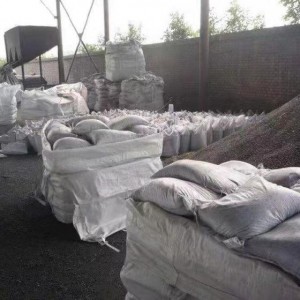High Quality Semi-Graphite Petroleum Coke
In the prior art, the temperature of the smelting process is generally compensated by adding graphite-like or silicon carbide as a temperature-raising agent during the converter smelting process. The temperature-raising efficiency of the temperature-raising agent is related to the quality of the temperature-raising agent itself and the conditions of the converter smelting process. Theoretical calculations show that under the condition of 30 tons of converter semi-steel steelmaking, 1 ton of semi-graphitized petroleum coke recarburizer or silicon carbide can Raise the molten steel temperature by 100-120°C/furnace. In order to make the molten steel reach a temperature above 1700°C, more than 500 kg of graphite-like or silicon carbide is usually required.


Semi-graphitized petroleum coke recarburizer On the other hand, due to the high price of primary iron in China and the low price of scrap steel, in order to reduce costs, foundries use a large proportion of scrap steel to synthesize cast iron, and directly add recarburizer in the electric furnace Carburizing, but due to the different smelting characteristics in the cupola, ordinary carburizing agents need to be put into the electric furnace to reduce or increase the melting temperature of the electric furnace to melt the carburizing agent. For example: currently commercially available carburizing agents include pig iron and asphalt Coke recarburizers, graphite electrode recarburizers, petroleum coke recarburizers, coal-based recarburizers, artificial graphite recarburizers, etc., which not only bring troublesome control problems to foundries, but are also easy to control due to temperature. The optimal smelting time of cast iron is reduced, which leads to problems such as high cast iron defective rate and low production efficiency.










